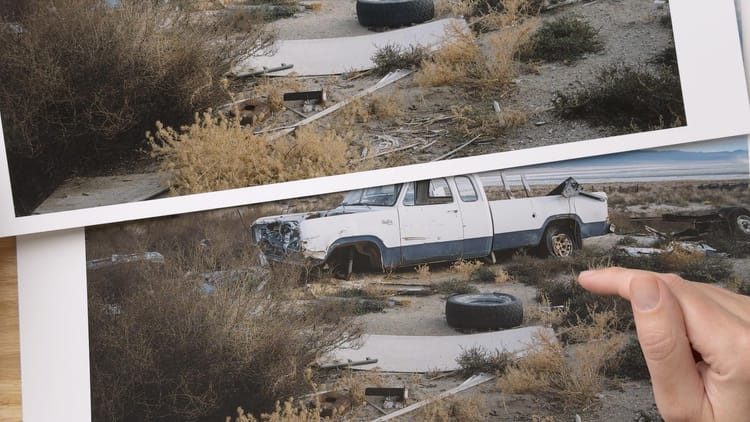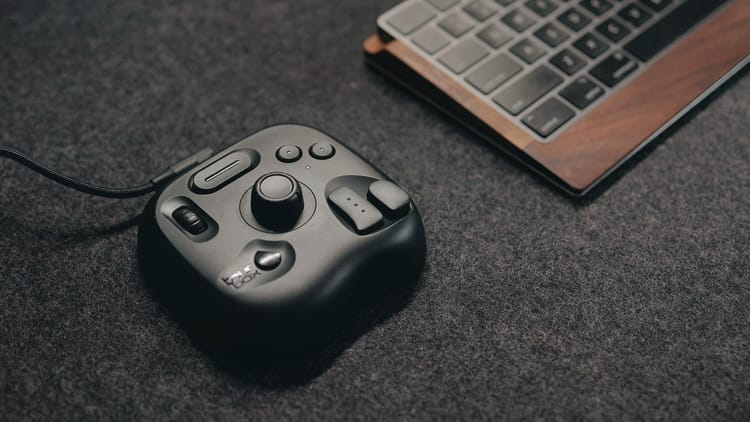
Best solid neutral density filters (2020)
Recently I shopped around for three-stop ND filters. I browsed B&H, Amazon, Adorama, YouTube, and read countless reviews. In the end, I felt more confused and indecisive about neutral density filters than when I started.
I decided the only way I was going to figure out which ND filter to own was to try them all. So, I purchased eight three-stop, 82mm ND filters from name-brands priced between $36 and $180.
ND Filters Tested
ND Filters | ND Filter Type | Links |
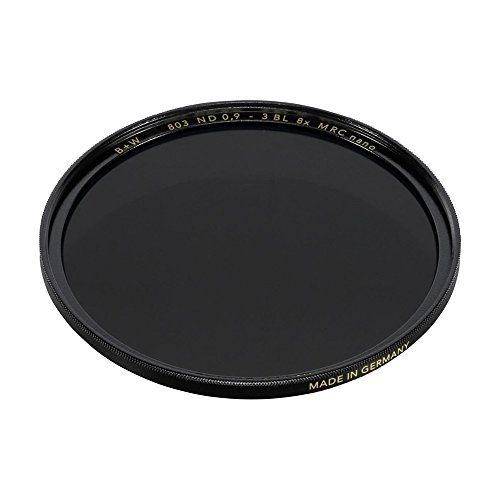 | B+W XS-Pro MRC-Nano 803 ND 0.9 | |
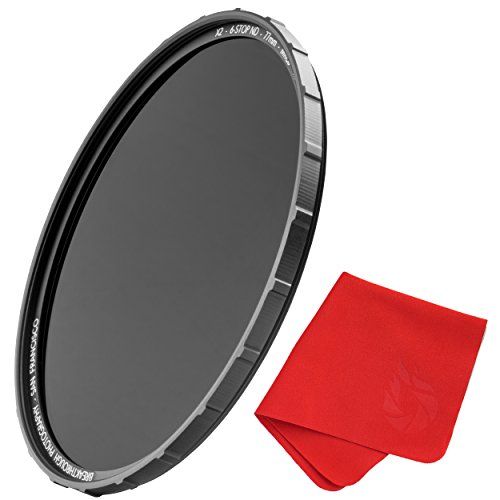 | Breakthrough Photography X2 3-Stop | |
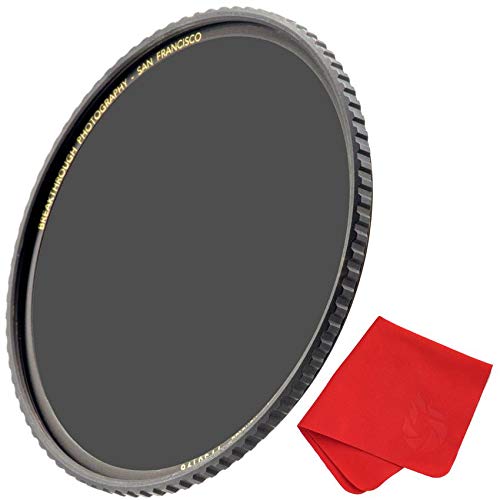 | Breakthrough Photography X4 3-Stop | |
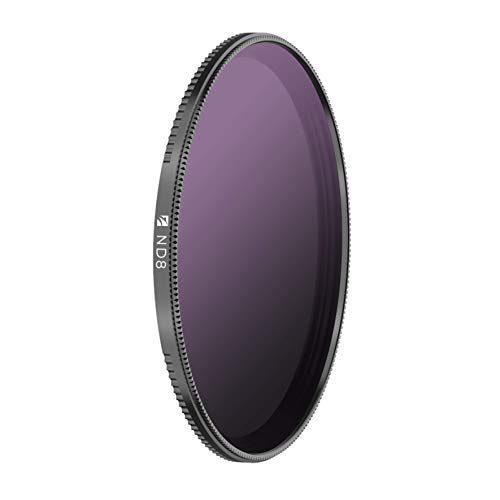 | Freewell Quick Swap Magnetic Filter ND8 | |
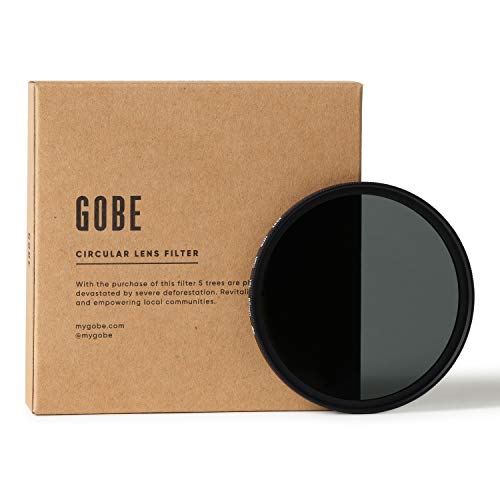 | Gobe ND8 | |
 | Hoya Pro-ND 8 | |
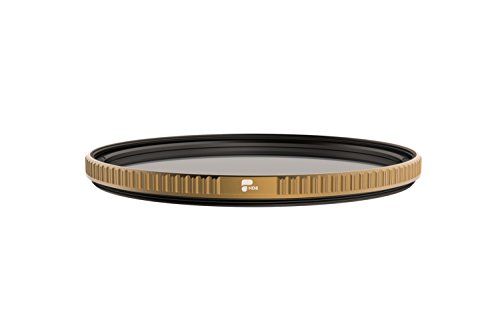 | PolarPro Quartzline ND8 | |
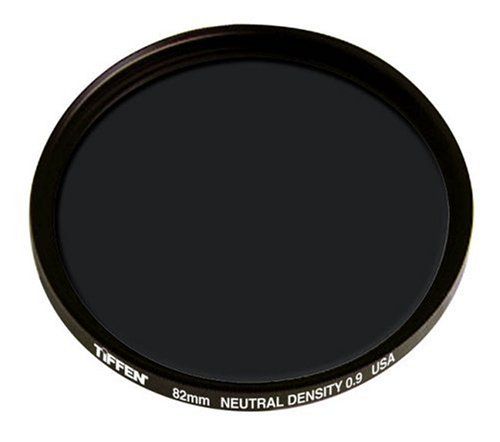 | Tiffen Neutral Density 0.9 Filter |
Each ND filter will be tested for color cast, color accuracy, vignette, and overall user experience. Which ND filter will win? Let’s find out.
ND Filter Tests
Color cast
Color cast occurs when colors are tinted with an unwanted hue. Color cast can affect an entire image or only reveal itself in particular areas (eg, shadows and highlights). Color cast can usually be fixed with a white balance eyedropper, but more severe color casts can be trickier.
To test for color cast, I’m using consistent lighting from a continuous 5600k LED light. I’ve set my Canon 5D Mark IV to the same white balance (5600k), Manual exposure, with fixed values for aperture, shutter speed and ISO. The filter is then the only variable between each RAW image.
Here’s a RAW, straight-out-of-camera image captured without an ND filter. We will use this image as a control for comparison purposes.

Next, I’ll capture the same image again with all the ND filters. Because of the darkening effect of the ND filters, I’m slowing the camera’s shutter speed down to match the exposure of the control image. Other than that, the setup will be exactly the same for each shot.
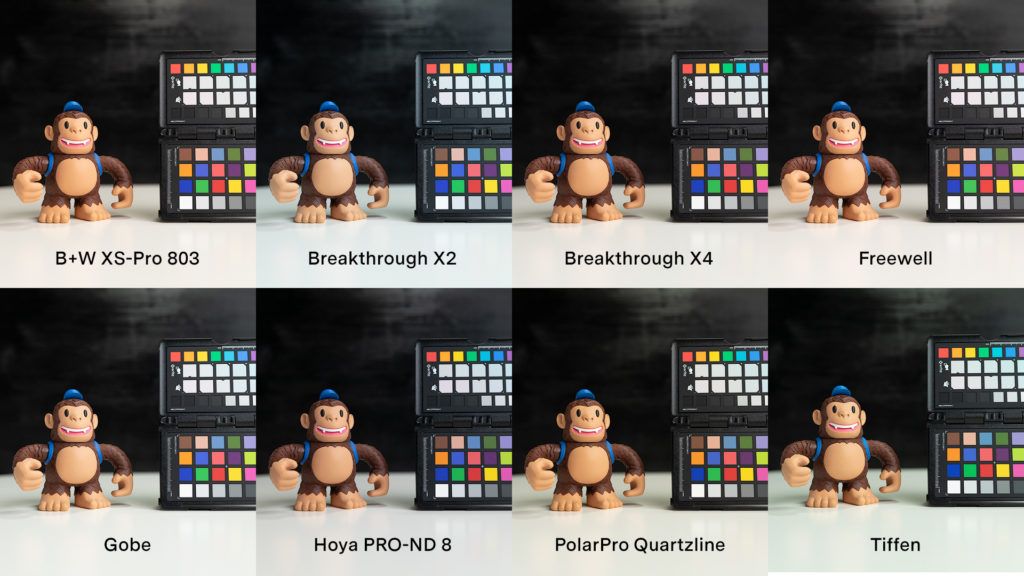
As you can see, some ND filters contributed quite a bit of color cast while others contributed barely any at all.
The result? The ND filters with the most color cast were the Tiffen, Gobe, Hoya, and Breakthrough Photography X2. The ND filters which contributed the least color cast were the B+W, Breakthrough Photography X4, Freewell, and PolarPro.
Color accuracy
What effect (if any) do ND filters have on individual colors? Meaning, will the red swatch at the top of the X-Rite ColorChecker Passport Photo 2 be the exact same hue of red in both the control and filtered image? Or will the ND filter shift red to a slightly different hue? This can be hard to see using the naked eye, so I’m going to employ a quantitative approach using Photoshop.
To begin, I’m using Adobe Camera RAW’s eyedropper tool to color correct each RAW image. The results will be consistent because I’m correcting each image by targeting the same neutral swatch in the ColorChecker Passport.
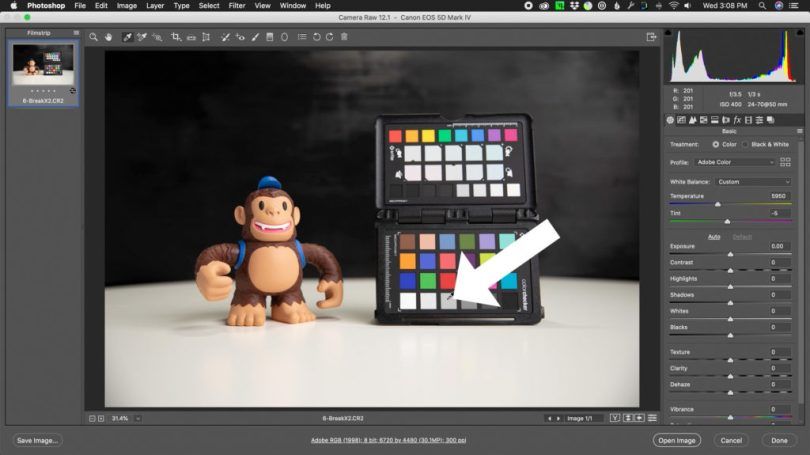
With each RAW image corrected, I’ll now layer all the images together in a single Photoshop document with the control image at the bottom of the Layers panel. One by one, I’ll select each image captured with an ND filter, set its layer blend mode to “Difference”, then check the RGB value of each color in the Passport to see if there is a numerical difference between the control and the filtered image.
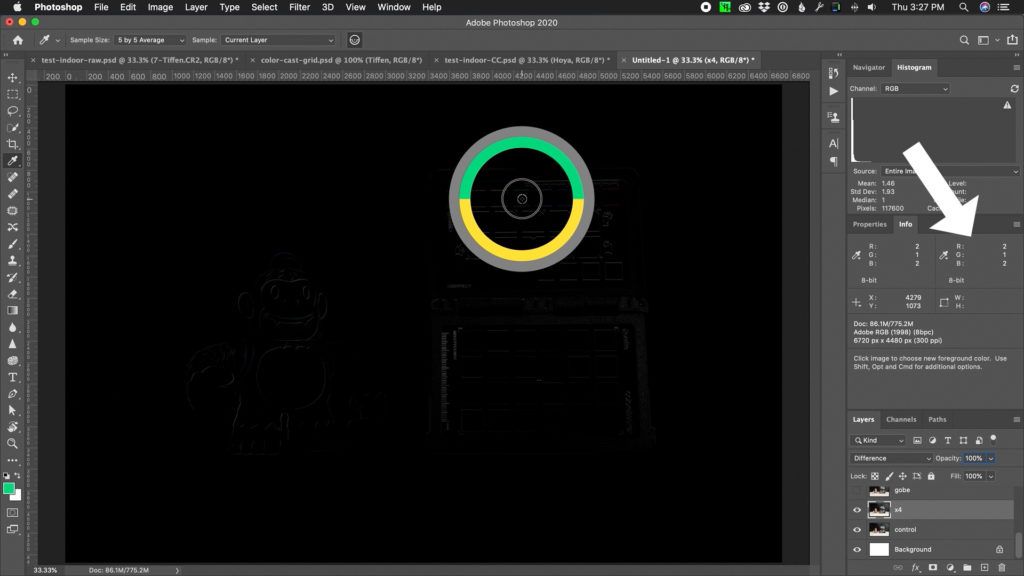
The result? Similar to the color cast test from earlier, the B+W, Breakthrough Photography X4, Freewell, and PolarPro ND filters performed best. Their colors were the most accurate when comparing their RGB values to the control image.
But what about shooting video—outdoors—where three-stop ND filters are most often used? Let’s take a trip to a local park and find out.

Outdoor ND filter video test
For this test, I’ll visit a local park on an overcast day. In this environment, it would be impossible to have 100% consistent lighting between each shot, but at least we can see the character of each filter when used in this setup.
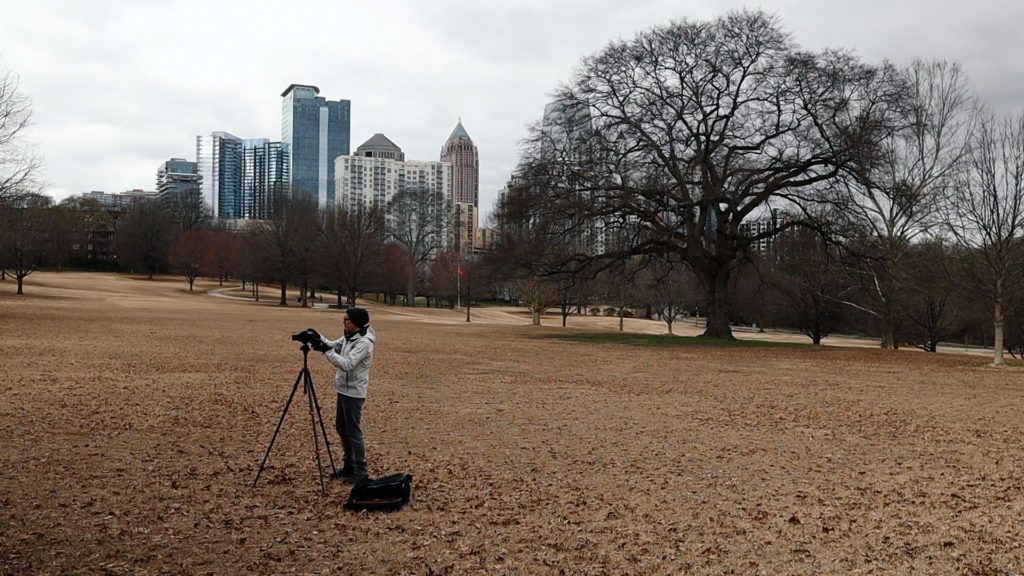
For this test, I’ll set the Canon 5D Mark IV to 1080 HD, 24fps, 1/50 second shutter speed, ISO 400, 5600k white balance. With these settings, the largest aperture I can use in the control image is f/11. With the three-stop ND filters, however, I can open the aperture up to f/4 for a more visually pleasing shallow depth of field.
Here’s a side-by-side comparison of a control video without an ND filter (left) and the same scene shot with each ND filter (right). Note that the tree over my shoulder is blurrier when using ND filters because of the larger f/4 aperture.

The result? As expected, the results were pretty much the same as earlier, with the B+W, Breakthrough Photography X4, Freewell, and PolarPro ND filters displaying the least amount of color cast. As for the rest of the ND filters, the Tiffen has a particular character and “look” which makes the footage appear color graded (in a good way).
Vignette
Vignette is a darkening effect that occurs in the corners and edges of an image. Like earlier color tests, the goal here is for each filter to have little effect on the image by contributing little-to-no additional vignette.
I’ll be shooting the Passport on white paper with a wide-angle, 16mm lens, for at this focal length vignette will be more pronounced and the edges of the filter (protruding from the front of the lens) may be problematic.
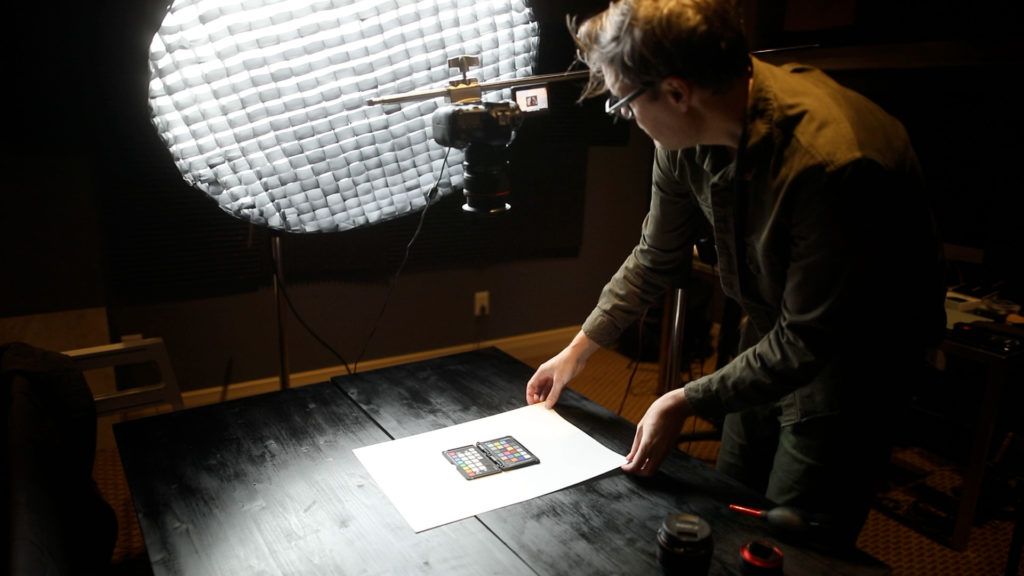
To start, I captured a RAW image without an ND filter for use as a control. Here’s the image.
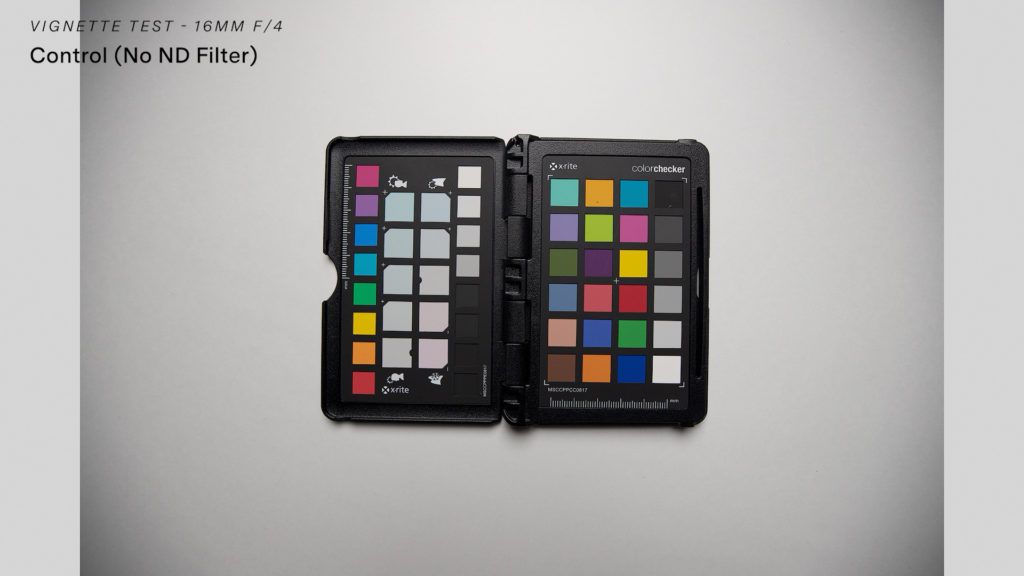
As you can see, my 16mm lens is contributing a fair amount of vignette without a filter. This vignette effect can be corrected fairly easily however using lens correction profiles in post. However, those profiles are designed for lenses without ND filters, so any additional vignette created by an ND filter will be more challenging to fix.
Alright, let’s capture the same image with all the ND filters.

The result? Once again, the Tiffen, Gobe, and Breakthrough Photography X2 filters did not perform as well as other ND filters.
Which ND filters performed best with the least vignette? PolarPro Quartzline, Breakthrough Photography X4, and the B+W XS-Pro 803.
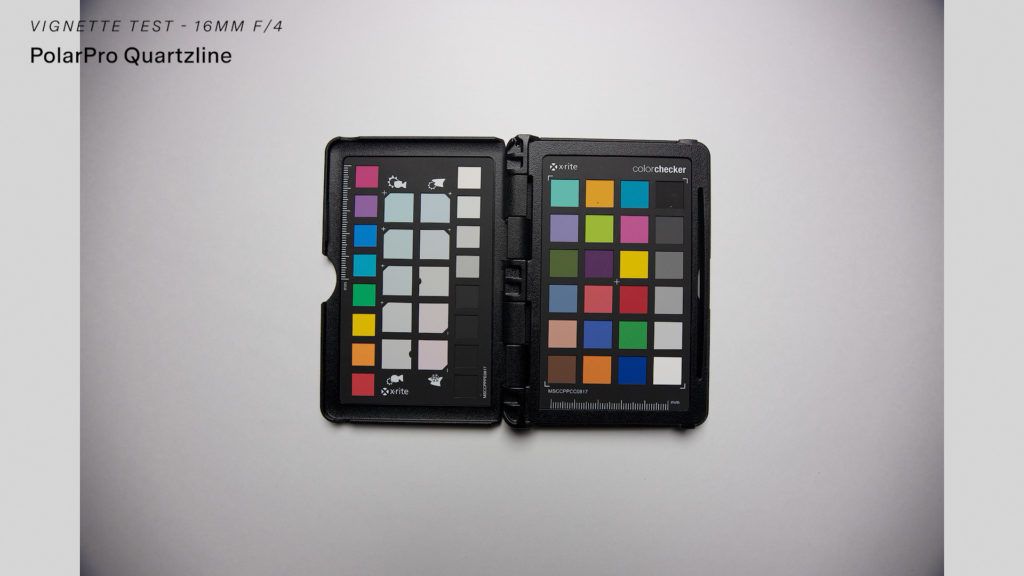
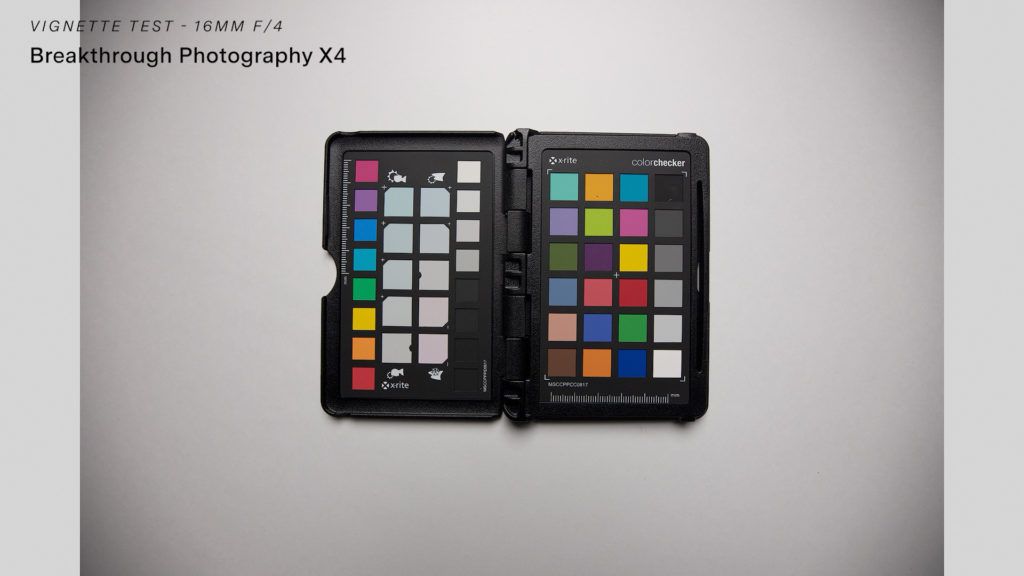
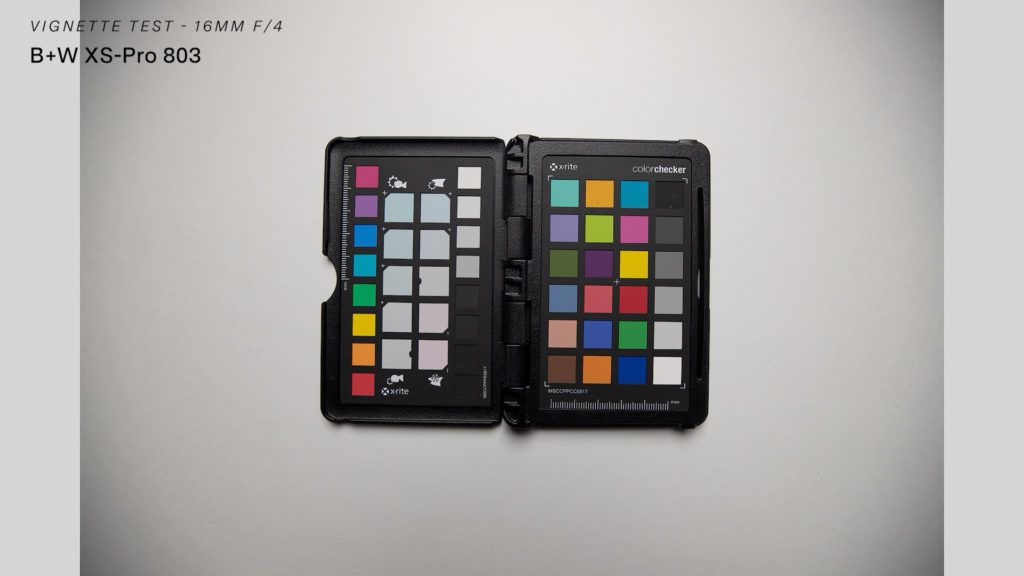
Best ND filters
Winner: B+W XS-Pro MRC-Nano 803 0.9
In the end, the B+W XS-Pro 803 came out on top. This ND filter had the least amount of color cast, was the most color accurate, and its ultra-slim profile contributed little-to-no vignette when attached to a wide-angle lens. Yes, this ND filter also happened to be the most expensive (at the time of this article), but perhaps sometimes you really do get what you pay for!
Runner-ups: Breakthrough Photography X4 3-Stop / PolarPro QuartzLine ND8 (Tie)
Second-place is a tie between the Breakthrough Photography X4 and PolarPro QuartzLine. Both ND filters exhibited very little color cast, were nearly as color accurate as the (winning) B+W ND filter, and contributed little vignette. Overall, the qualitative difference between these two ND filters and the B+W was slim. From a usability perspective, I actually prefer the notched-ring design of the Breakthrough Photography and PolarPro ND filters, for they’re easier to turn when wearing gloves. Last but certainly not least, they’re cheaper too. Either one of these ND filters would be fantastic.
Updated option: Kolari Vision solid ND
After publishing this comparison, Kolari Vision sent me one of their neutral density filters. Optically, the filter is very accurate, with little-to-no color cast added to photos and videos. The hardware design is also top quality, with perfectly notched grooves around the band for easy threading on and off a lens. The filter also comes with a durable, padded, protective case. Check out my video review of the Kolari Vision solid ND to learn more.

